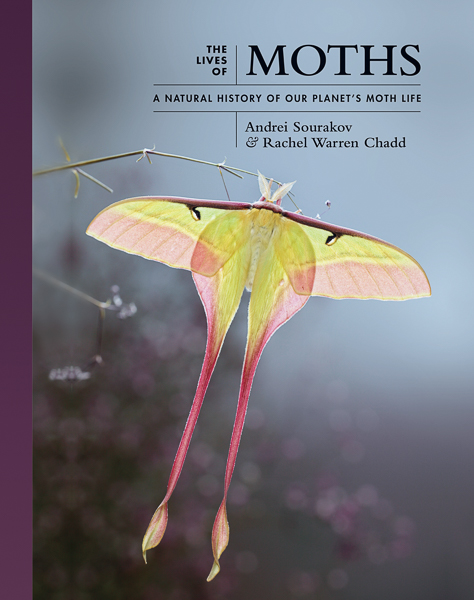 |
by Andrei Sourakov and Rachel Warren Chadd.
Moths are among the most underappreciated insects on the planet, yet they make up the majority of some 180,000 known species of Lepidoptera. Filled with striking images, The Lives of Moths looks at the remarkable world of these amazing and beautiful creatures.
While butterflies may get more press than moths, Andrei Sourakov and Rachel Warren Chadd reveal that the lopsided attention is unjust. Moths evolved long before butterflies, and their importance cannot be overestimated. From the tiniest leaf miners to exotic hawk moths that are two hundred to three hundred times larger, these creatures are often crucial pollinators of flowers, including many that bloom at night or in twilight. The authors show that moths and their larvae are the main food source for thousands of animal species, and interact with other insect, plant, and vertebrate communities in ecosystems around the world, from tropical forests and alpine meadows to deserts and wetlands. The authors also explore such topics as evolution, life cycles, methods of communication, and links to humans.
A feast of remarkable facts and details, The Lives of Moths will appeal to insect lovers everywhere.
The first thing to hit you when opening this luscious publication, is that it is choc-a-bloc with high-quality images, and some examples are shown in this review. However, focusing solely on these would be doing the authors and publishers a disservice, since this book is so much more. There have been several recent publications, most notably Butterflies by Martin Warren, and Field Guide to the Caterpillars of Great Britain and Ireland by Barry Henwood, Phil Sterling and Richard Lewington, which go much deeper in terms of conveying the wonders of our Lepidoptera, and this book is written in a similar vein - prepare to be amazed! This book is full of some incredible facts - the sort of thing that, as a 'Lepidoptera nerd' (as my children and now grandchildren call me), I would take great delight at replaying at a dinner party, which is probably why I rarely get invited to any. Seriously - anyone wanting to deepen their knowledge of our Lepidoptera would do well to take a look at what this book has to offer.
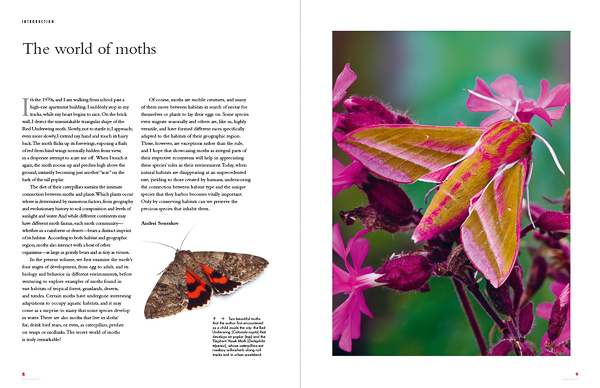 |
I must admit, I could barely put this book down while reading the introductory chapters that collectively comprise a third of this 288-page book. A selection of facts: Io moth larvae go through 6 instars if male, and 7 if female; the Tobacco Hornworm can be trained to avoid a particular odour and the memory persists to the adult moth; the Diamondback Moth may create a cocoon with large holes to keep the pupa dry in very wet conditions; males of the Evergreen Bagworm mate with the female while she is still in her cocoon through a special opening - with the female ultimately laying her eggs before she dies within the cocoon; hormones determine whether or not a larva moults into a new skin or a pupa; pheremones used in courtship must be species-specific and there must therefore be over 100,000 mixtures yet to be discovered; male moths often have feathery antennae to increase the surface area to accommodate pheremone-detecting sensory organs; males of the whistling moths are territorial and produce whistle-clicking sounds in flight. I could go on.
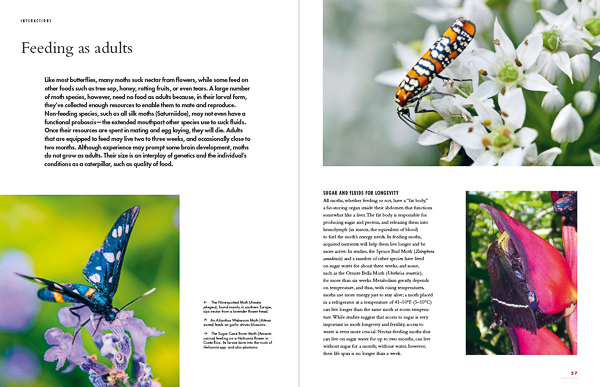 |
The introductory chapters are followed by a number of selected species descriptions, aligned with habitats, that demonstrate the incredible diversity of the moth world - representative species are discussed with regard to tropical rainforests; grasslands and meadows; deserts and tundra; temperate deciduous forests; coniferous and wetland plants; and agroecosystems and around homes. Within each of these habitat types, relevant topics are discussed, such as coevolution and mimicry; moths that live in sloth hair; the effect of deforestation; climate change; and so on. Again, this is a long list that warrants the reader's attention.
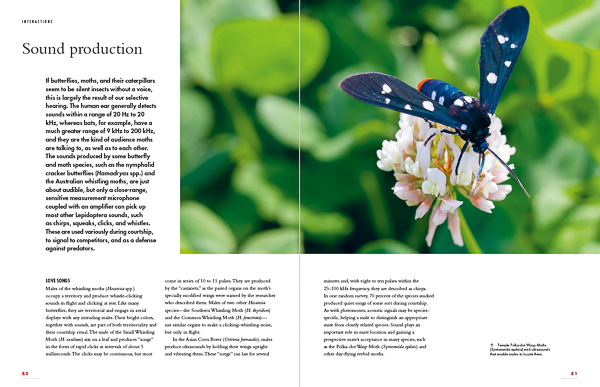 |
As you can tell, I thoroughly recommend this book and, in my opinion, the price of this high-quality hardbook book represents extremely good value for money. It has been a pleasure to review.
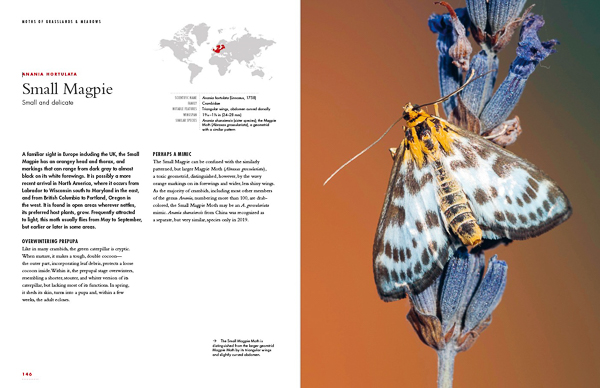 |